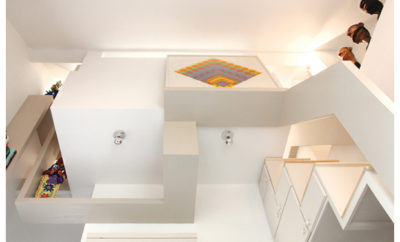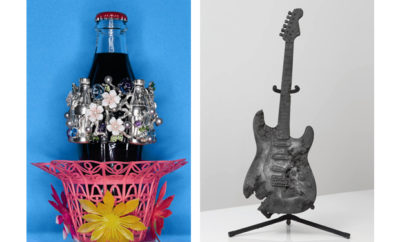
Design
What Makes Design Pop?
THREE QUESTIONS FOR LISA ROBERTS
IN ADDITION TO HER ROLE AS A CONTEMPORARY DESIGN CONNOISSEUR,
Lisa S. Roberts is an architect, graphic and product designer, collector, writer, speaker, and promoter. She is a trustee of the Cooper Hewitt, Smithsonian Design Museum and has been vice-chair of the National Design Awards. She’s also a trustee of the Philadelphia Museum of Art and a board member of Collab, which supports the museum’s modern and contemporary design collections and is known for its annual awards, which have been given to such legends as Zaha Hadid, Marc Newson, and Maya Lin.
Within the nineteenth-century walls of her house in Philadelphia, Roberts has created a mini-museum of her comprehensive collection of contemporary design—from the singular to the everyday. Her first book, Antiques of the Future, published in 2006, put forth the contemporary objects she feels will one day be considered icons, those that best tell the story of our era. In accordance with this publication, Roberts hosted the TV program “My Design Life,” where she began a journey of raising public awareness about design. In DesignPOP, just published by Rizzoli, Roberts continues with this mission. She seeks to illuminate twenty-first-century design, to teach us how to judge design, and to interpret the story of the design renaissance through such key themes as new materials and processes, sustainability, and social responsibility.
How would you define the design culture of today?
Rather than defining design culture, my mission is to interpret design to a broad audience—to get people to see things they may not see, to point out features that increase understanding and appreciation for design—and to do this by taking a lot of the complexity out of the industry and simplifying it for people who are not in the design world. We all start with our personal taste but with knowledge, we get a better understanding of why some- thing is good, why we should pay attention to it. I want to help people gain that knowledge.
I surround myself with experts—curators, designers, manufacturers, and people in the press— getting their opinions and thoughts about design. I try to stay current with this rapidly changing field— learning about materials, manufacturing processes, and, most of all, technology. After I wrote my first book, people came up to me and said it was an eye- opener. They had never really noticed a lot of the objects they used every day. Now, they look with a more critical eye. Their design awareness, or design IQ, is elevated, so they seek out better design; and ultimately that means there is greater demand, which means more work for the industry.

Bertjan Pot and Marcel Wanders’s Carbon chair, 2004, made of carbon fiber and resin, weighs less than three pounds.
What has had the greatest impact on design in the twenty-first century?
The single biggest influence on design in the twenty-first century emerged in the late twentieth century—and that was technology. Beginning with computer-aided design, technology has affected the development of new materials, new production processes, and even new types of products. Among new materials, for instance, there is carbon fiber, which is very strong and lightweight and led to Bertjan Pot and Marcel Wanders’s Carbon chair. New production methods include 3-D printing, laser cut- ting, and CNC milling. Dirk Vander Kooij 3-D prints his plastic Chubby chair using an extrusion method.
A trend going forward is customization of mass-pro- duced products. Designers are finding ways to individualize their designs. Look at François Brument’s Vase # 44—it’s a 3-D printed vase whose shape is created by sound. The louder the noise the wider the vase—modulating one’s voice creates different shapes.

Wasara tableware by Shinichiro Ogata, 2008, resembles delicate porcelain but is made of sustainable materials— sugar cane fiber, bamboo, and reed pulp.
How is the notion of “good design” different today from in the postwar years?
Good design in the mid-century referred to form and function. It also began the process of democratizing design, lowering the prices, and making well thought out design accessible to a mass audience. Toward the end of the twentieth century designers and architects began to design the most basic household objects, such as teakettles, lemon juicers, even toilet brushes.
But today, good design also includes sustainability and socially conscious design. Each replaceable filter in the Bobble water bottle by Karim Rashid saves three hundred bottles of water. Socially responsible designers can bring design to people who have not had access to it in the past. Yves Béhar stands at the forefront of this approach with his colorful eyeglasses for school children in Mexico, and his One Laptop per Child program that dispenses computers to children in developing nations around the world. Or look at Michael Graves, who after becoming a paraplegic devoted a good part of his practice to designing for people with disabilities. Here you have a world-renowned architect using the same level of design attention he gives to his buildings to designing a handrail for people who have a hard time getting in and out of a bathtub.
So good design goes beyond just the end product: it starts with how it is made, what materials are selected, but it ultimately depends on how it improves our lives.
DesignPOP by Lisa Roberts is published by Rizzoli.












